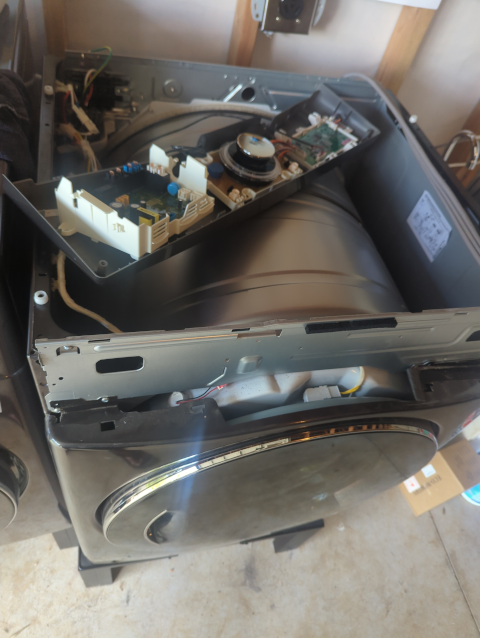
When I was starting my intern year of medical training, I had to move about five hundred miles to a new town. I got a house for my cat and me, we packed up all our belongings into my Rabbit Convertible, drove to the new town where we knew nobody, and started to settle in. I moved on June 25th, and my internship started on June 30th. I knew that I would be working a lot (over 100 hours per week, as it turned out) with very few days off.
I went into a Sears store because I knew where it was (though it turns out there was actually one much closer to my house) and walked in and found a washer and dryer that were cheap enough. When the shark-like salesman approached, I told him that if he could guarantee that they could be installed and running before the 30th, he had a sale and I would write a check on the spot. If there were complications, including having to talk about the “extended warranty,” then I’d go elsewhere.
My reasoning was that I was about to have much of my life taken away from me, and if I only got one day off a month (which turned out to be about right), I didn’t want to be spending it hanging out in a laundromat.
Sears came through, and it rates among the very best purchases of my life. Even though I was actually making less than minimum wage as an intern, the hospital cafeteria food was free to me (and, really, not too bad) and I didn’t have time to spend money anyway, and the time that I “bought” with my laundry equipment purchase was golden. I could study, do chores, pre-make meals, SLEEP, and do all kinds of things while I was at home doing laundry instead of traveling to a noisy, uncomfortable laundromat juggling quarters and clothes and baskets and bottles of detergent.
I’ve retained a respect for having good tools for life’s essentials (a safe shelter, a well-equipped kitchen, decent computers, reliable transportation, and laundry equipment) ever since.
When I moved to the island compound, getting the laundry equipment up and running involved building a garage to house the laundry equipment, waiting for our ship to come in, rebuilding the washing machine that had been destroyed on its trans-Pacific voyage, installing an adequate solar plant to power the electric dryer, getting by with a 100’, 50 amp, 220 volt extension cord and a garden hose for a while, finally getting the garage wired, and designing and installing a rainwater catchment system for water. But it was a great day when HA and I were finally able to forego our treks to the local village to use the laundromat.
When the dryer broke last week, I was bummed. Dryers are generally lighter and simpler than washing machines, though, so I was pretty confident I could fix it. Unfortunately, LG likes to encase their circuit boards in silicone which probably makes them more reliable, but impossible to troubleshoot at a component level. I even have the official, top-secret repair manual, but its favorite line is “next replace the logic board.” I was able to get a new main control board shipped here quickly for about $400, but the symptoms remained exactly the same. Fortunately, the vendor is willing to accept it as a return. Unfortunately, the next most likely “replace the logic board” part is on back-order.
I checked in with a membership warehouse store that will actually deliver to us. They have a perfectly fine dryer on sale right now for $400 (it’s $900 at the home improvement store next door). I really struggled with this. I shouldn’t have to throw away a $1,000 dryer that’s only four years old, but repair parts for it are nearly as much with no guarantee they’ll work. Other sources of the suspect interface logic board won’t accept returns, so I might spend $300 getting that part and still be without a dryer. There’s a small but very real chance that the problem is a broken wire in a wiring harness — an expensive, difficult, and time-consuming repair even if I do it myself. The factory approach to repair is just to replace logic boards and components and harnesses from stock until the problem goes away, but when “stock” is 3,000 overseas miles away that’s just too slow and expensive. So the big, expensive, pretty, matching, not-very-old dryer is going to recycling and the new dryer should show up by the end of the month. In the mean time, we have lots of sunny weather even if the high humidity makes line-drying a slow process.
—2p